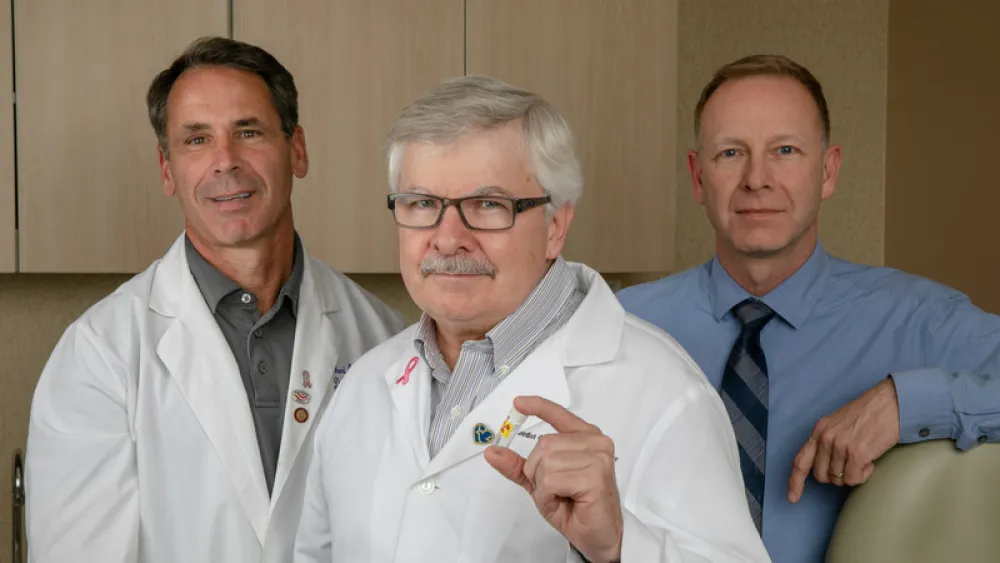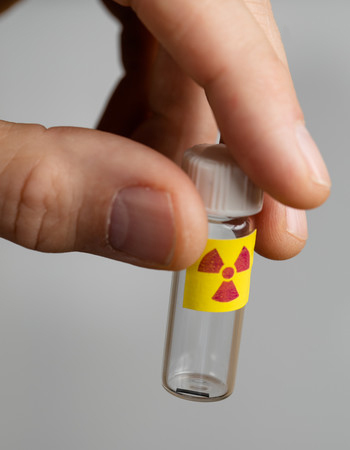




Cancer Care
Tiny I-125 Seed Helps Surgeons Pinpoint Cancer


A relatively new procedure at Methodist Estabrook Cancer Center is focused on the comfort and care of breast cancer patients with the smallest signs of disease. Known as I-125, this tiny “seed” is helping doctors pinpoint and remove areas of cancer too small to be seen or felt.
“It’s just another option that can be a little more convenient for the patient,” said James Reilly, MD, a surgical oncologist at Methodist's Breast Care Center. He spearheaded bringing the procedure to Methodist.
The I-125 seed implant
 The I-125 seed is about the size of a piece of pencil lead. It’s implanted into a woman’s breast when there’s an abnormality that needs to be removed but is too difficult for a surgeon to locate without a guide.
The I-125 seed is about the size of a piece of pencil lead. It’s implanted into a woman’s breast when there’s an abnormality that needs to be removed but is too difficult for a surgeon to locate without a guide.
“We use an ultrasound to find the cancer, guide a needle into it and then drop the seed in,” explained Richard Kutilek, MD, a radiologist and medical director for imaging at the Breast Care Center. “It’s a piece of cake.”
The seed contains trace amounts of radioactive material – less than a drop of iodine – which the surgeon can then locate using a special detector. Finding and removing the seed means doctors find and remove the cancer.
Safe alternative option for patient benefits
The I-125 is considered a safe alternative to a procedure doctors still use to locate cancerous cells.
“In cases where we don’t use the seed, a radiologist inserts a guide wire either with an ultrasound or mammogram,” Dr. Reilly said. “That wire would then lead us to the lesion. The only difference to the patient is that the woman would have a wire sticking out of her breast until the surgery, making her unable to leave the hospital between procedures.”
Using a guide wire instead of the seed means two procedures must be scheduled for the same day, which can be an obstacle.
“For patients, it’s a benefit because you can have the seed inserted a day or two before your surgery and can schedule it first thing in the morning,” Dr. Kutilek said. “You don’t have to wait for multiple departments to align their calendars so you can have a procedure you may be anxious about in the first place. Plus, you don’t have a wire hanging out of your breast while you’re waiting for surgery, so there’s a comfort aspect as well.”
Teams collaborate to provide I-125 option
From the provider standpoint, bringing the I-125 seed to Methodist was a collaboration between many teams – surgical oncology, radiology and nuclear medicine. Because of the radioactive material contained inside the seed, the implant must be tracked along its every move.
“We are the overseer of this tiny seed,” said Tom Brennan, service leader for imaging at Methodist Hospital. “It comes in the door and we escort it to the Breast Care Center, where it is implanted in the patient. We then escort the seed from surgery to pathology once it is removed. After pathology takes the seed from the tissue, we bring it back home where we store it for two years before disposal.”
Tracking and disposal of the seed follows all rules set forth by the Nuclear Regulatory Commission, even though the amount of radioactive material in the seed is minimal.
“There are a lot of man-hours involved in governing these little seeds, but there is a huge patient benefit, and that makes it all worthwhile,” Brennan said.

